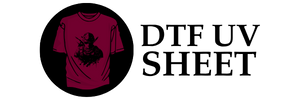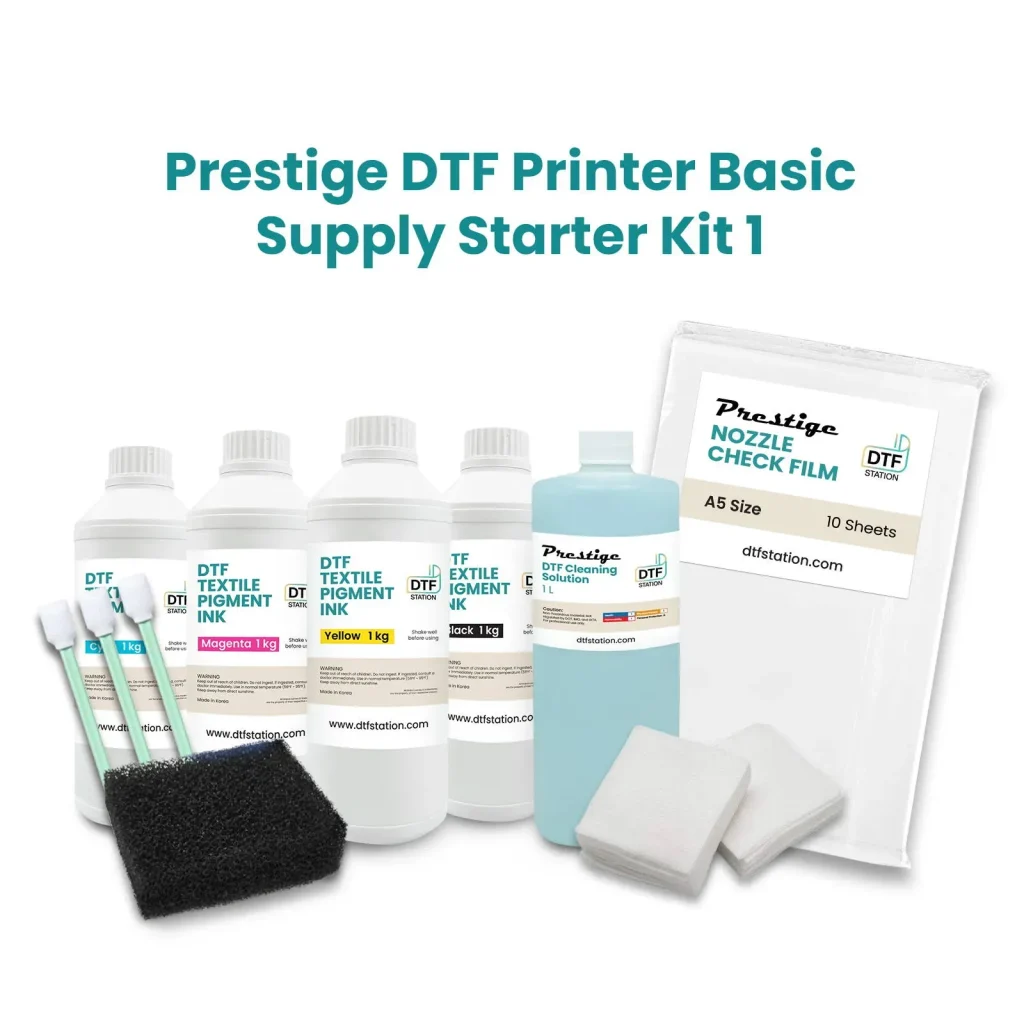In an ever-competitive print industry, DTF supplies are essential for print shops looking to enhance their operational efficiency. With the rising popularity of Direct-to-Film (DTF) printing technology, professionals now have access to high-quality transfer films that make creating vibrant designs on various fabrics remarkably easy. By providing superior print quality and streamlined processes, these innovative DTF supplies can significantly elevate a print shop’s productivity. In order to keep up with market demands, it’s crucial for print shops to invest in the right print shop supplies that not only meet quality standards but also maximize workflow efficiency. As the industry evolves, mastering DTF technology can set your business apart from the competition and foster lasting customer relationships.
Understanding the essentials of Direct-to-Film printing can be a game-changer for businesses involved in custom apparel production. This advanced printing method employs specialized film and inks to transfer designs directly onto fabrics, offering a solution that is not only efficient but also capable of producing stunning results. By leveraging innovative transfer films and eco-friendly inks, print providers can cater to a growing clientele eager for high-quality, personalized products. Success in the print industry today hinges on adopting cutting-edge techniques to streamline processes and improve customer satisfaction. Embracing these modern printing alternatives may be the key to enhancing overall productivity and gaining an edge in a crowded marketplace.
Maximizing Print Shop Efficiency with DTF Supplies
In the fast-paced world of print shops, maximizing efficiency is essential for meeting customer demands and staying competitive. DTF supplies play a crucial role in this aspect, particularly as print shops increasingly adopt Direct-to-Film technology. By utilizing high-quality transfer films and water-based DTF inks, operators can significantly reduce setup time and printing errors, thus streamlining their overall workflow. This shift not only enhances production speed but also leads to cost savings on materials and labor in the long run.
To further improve operational efficiency, print shops should regularly assess their inventory of DTF supplies. Keeping track of film and ink usage ensures that shops are never caught off guard when urgent orders come in. By integrating inventory management systems that align with the specific needs of DTF printing, shop owners can automate reordering processes, maintain optimal stock levels, and ultimately enhance productivity. Investing in reliable DTF supplies is a smart strategy to position any print shop as a leader in the industry.
Understanding the Benefits of DTF Technology
DTF technology revolutionizes the way prints are created, allowing for vibrant, high-quality designs that are both durable and flexible. Unlike traditional methods such as screen printing, DTF printing requires no lengthy setup or extensive labor, making it an ideal choice for small batches and intricate designs. Print shops that adopt DTF technology can cater to a diverse clientele by offering customized apparel and products, thus opening new revenue streams while maintaining efficient operations.
Furthermore, the versatility of DTF technology extends beyond fabric types. Whether it’s cotton, polyester, or blends, DTF printing delivers impressive results across various materials. This adaptability ensures that print shops can meet a wider range of customer needs without sacrificing quality or efficiency. As the market demand for customization and high-quality prints continues to grow, embracing DTF technology positions print shops for success.
Choosing High-Quality Transfer Films for DTF Printing
Selecting the right transfer films is one of the most critical decisions print shops must make when adopting DTF technology. High-quality transfer films not only enhance the overall appearance of the print but also ensure strong adhesion and durability. Brands like WTM and BHT have established their presence in the industry by providing reliable films that stand up to various wash cycles while still looking vibrant. Inadequate film quality can lead to poor transfer results, wasting both time and resources, making it essential to prioritize quality.
Moreover, print shops should also consider the specific requirements of their target market when choosing transfer films. Understanding factors such as fabric compatibility, design complexity, and washability can help in selecting the best option. By offering products that maintain their quality over time, print shops can enhance customer satisfaction and loyalty, solidifying their reputation in the competitive landscape.
The Importance of Ink Selection in DTF Printing
The choice of ink is equally critical in achieving exceptional results in DTF printing. Water-based DTF inks are highly recommended due to their vibrant color reproduction and adherence to environmental safety standards. By opting for such inks, print shops not only elevate the quality of their prints but also align themselves with the growing demand for sustainable practices in the printing industry. Eco-friendly inks are becoming increasingly popular among consumers, making them a strategic choice for businesses aiming to enhance their market presence.
Additionally, selecting the right ink type can affect the overall workflow efficiency. Quick-drying inks enhance production speed, allowing print shops to manage larger orders without added downtime. Regular training on ink properties and handling can further optimize ink usage, minimizing waste and ensuring the quality of prints remains high. This holistic approach to ink selection empowers print shops to operate more efficiently while meeting the evolving expectations of customers.
Enhancing Operational Efficiency Through Equipment Maintenance
For print shops leveraging DTF technology, routine equipment maintenance is vital to sustaining high-quality production. Regular cleaning of printers and monitoring of curing oven temperatures ensures that all processes operate at peak efficiency. Neglected equipment can lead to unexpected downtimes, which can severely impact production schedules. Setting up a maintenance schedule helps preempt potential issues, allowing print shops to maintain continuous workflow and avoid costly repairs.
Furthermore, investment in high-quality equipment can significantly reduce maintenance costs over time. By choosing reliable brands known for their durability, print shops can ensure that their production machinery remains functional longer. Training staff on basic maintenance procedures can foster a proactive culture that prioritizes equipment care, translating to a more efficient working environment and improved output quality.
Training Staff for Optimal DTF Printing Processes
Investing in staff training is crucial for any print shop aiming to enhance operational efficiency, especially with DTF printing technology. Training can cover essential practices like film and ink selection, proper powder application techniques, and heat press operation techniques. By providing comprehensive education, print shops empower employees to perform their tasks with confidence, resulting in fewer errors and streamlined workflows. Workshops or training seminars can help ensure the staff is up-to-date on the latest advancements in DTF technology.
Additionally, involving staff in improving processes can foster a collaborative work environment that drives innovation. Employees on the front lines often have insights into workflow bottlenecks and inefficiencies, making their input invaluable. By encouraging an open culture where feedback and ideas are welcomed, print shops can continuously improve their operational practices, leading to increased efficiency and productivity.
Frequently Asked Questions
What are the essential DTF supplies for improving print shop efficiency?
Essential DTF supplies to enhance print shop efficiency include high-quality transfer films, water-based inks, and adhesive powder. Choosing top-notch transfer films, such as those from WTM and BHT, ensures vibrant prints with excellent durability. Additionally, using water-based DTF inks like Inktec not only promotes vibrant prints but also aligns with eco-friendly practices, appealing to today’s consumer preferences.
How does Direct-to-Film printing (DTF) technology improve operations in print shops?
Direct-to-Film printing (DTF) technology enhances operations in print shops by significantly reducing setup time and allowing for quicker production of high-quality designs on various fabrics. Unlike traditional screen printing, DTF technology provides flexibility for short runs and detailed designs, which boosts overall efficiency and productivity.
What impact does film quality have on DTF printing results?
Film quality is crucial in DTF printing because it directly affects adhesion, durability, and the final appearance of the printed design. High-quality transfer films are designed to ensure strong adhesion during the transfer process, minimize print errors, and maintain the vibrancy of colors even after multiple washes, making them essential for achieving excellent results.
What role does powder adhesive play in DTF printing efficiency?
Powder adhesive is vital in DTF printing as it ensures that the printed designs adhere properly to fabrics. The correct application of adhesive powder not only enhances the quality of the transfer but also improves efficiency by minimizing waste. Effective management of adhesive usage can lead to cost savings and streamline production processes for print shops.
Why is maintenance important for DTF printing equipment?
Maintaining DTF printing equipment is critical to preventing unexpected downtimes and ensuring consistent print quality. Regular maintenance, such as cleaning printheads and ensuring curing ovens are functioning properly, helps maintain optimal performance levels for printers. This commitment to equipment upkeep can significantly enhance operational efficiency in your print shop.
How can training staff on DTF technology improve print shop efficiency?
Training staff on DTF technology is essential for boosting print shop efficiency as it fosters familiarity with best practices and streamlined workflows. By implementing systematic training on processes such as print preparation, powder application, and heat pressing, staff can improve turnaround times and adapt quickly to workflow changes, ultimately enhancing productivity across the print shop.
| Key Components | Description |
|---|---|
| Film Quality | High-quality transfer films like WTM and BHT improve adhesion and durability, ensuring vibrant designs after washing. |
| Ink Type | Water-based inks such as those from Inktec create bright colors and align with eco-friendly practices. |
| Powder Adhesive | Using adhesive powder ensures designs adhere well to fabrics, reducing waste and saving time. |
| Equipment Maintenance | Regular maintenance of printers and curing ovens prevents downtimes and maintains print quality. |
| Training and Processes | Staff training on DTF best practices boosts productivity and enhances workflow efficiency. |
| Emerging Trends | Integrating automation, using inventory management software, and adopting sustainable practices are crucial to staying competitive. |
Summary
DTF supplies are essential for any print shop looking to enhance its operational efficiency in today’s fast-paced market. By adopting high-quality components like premium transfer films and eco-friendly inks, print shops can significantly improve product durability and print quality. Moreover, implementing robust maintenance routines, effective training programs, and keeping up with emerging trends are vital strategies for boosting productivity. In a landscape where customization and sustainability are increasingly prioritized, investing in the right DTF supplies ensures not only survival but success in the competitive print industry.



